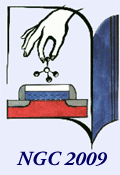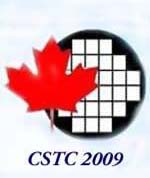
|
Nano and Giga Challenges in Electronics, Photonics and Renewable Energy | 14th Canadian Semiconductor Technology Conference |

 |
|
 |
|
|
Commentary
Based on the same core materials — silicon and other semiconductors — photovoltaics has for a long time been a "poor relative" of micro- and optoelectronics. That is not the case any more. The need for clean and renewable energy is becoming evident for the global community from the limited resources of mineral fuel and from the growing environmental impact of our current highly wasteful use of natural resources. Moreover, the world-wide energy crisis may spark a global political crisis and threaten the existence of human civilization. Driven by scaling electronic devices to smaller and smaller sizes, the electronic industry has developed a set of sophisticated methods for deposition of ultra-thin films with very precise composition and nano-scale lithographic patterning. Enormous investment in nanotechnology for electronics R & D from companies and governments of many developed countries now finds a "new source of revenue" — solar energy applications. Arizona State University, the largest university in United States, has a broad variety of nanotechnology research areas for electronics, photonics, renewable energy applications coordinated by several research centers and two umbrella organizations — Arizona Institute for Nanoelectronics (AINE) and Arizona Institute for Renewable Energy (AIRE). Photovoltaic research at ASU is conducted in several groups including the Center for Nanophotonics, the Flexible Display Center, the Center for Bioenergy and Photosynthesis, and the Photovoltaic Testing Lab. Solar energy conversion research at ASU covers a broad area from biofuel and artificial photosynthesis to semiconductor and organic photovoltaics to testing photovoltaic devices. We also have strong research efforts in fuel cells and hydrogen storage. ASU hosted the 3rd Nano & Giga Forum (NGC2007), which among others, was supported by Canadian Ministry of Foreign Affairs and Trade and attended by several leading Canadian researchers and government officials including John Polani, Nobel Laureate from the University of Toronto, and Alastair Glass, Minister of Research Innovation from Ontario. As a follow-up, ASU is partnering with McMaster University in organizing the NGC2009 conference as a joint event with 14th Canadian Semiconductor Technology Conference (CSTC2009), and we hope that this coming meeting will be a valuable contribution in partnership between our states and will help the exchange the ideas across the borders of countries, disciplines and technologies. |